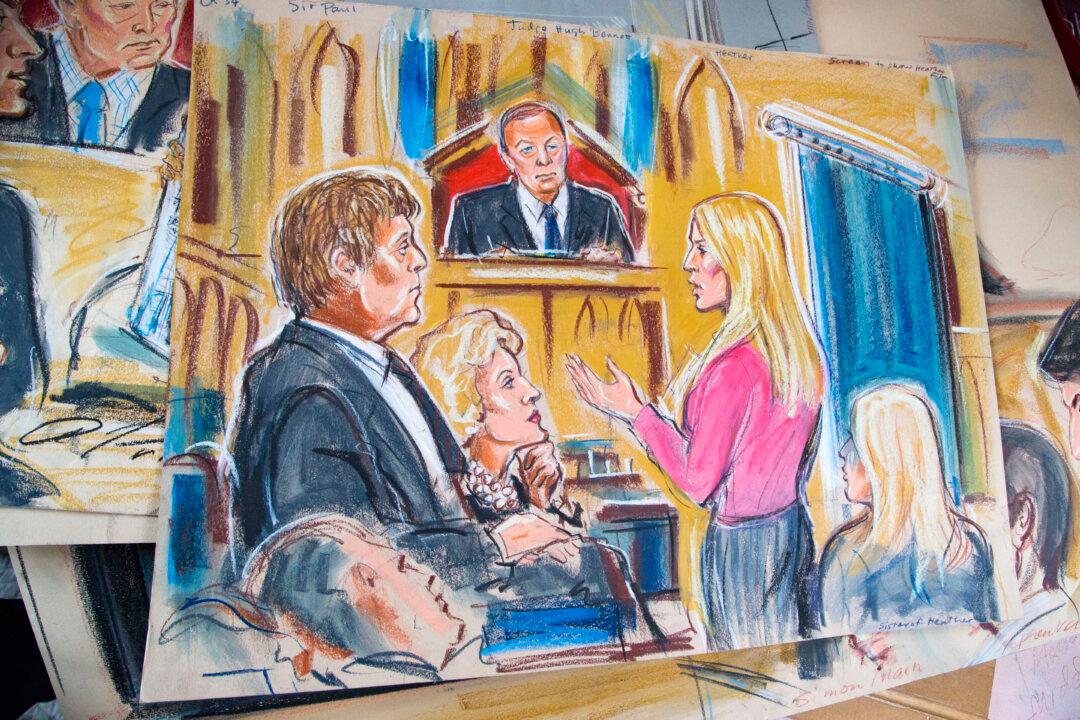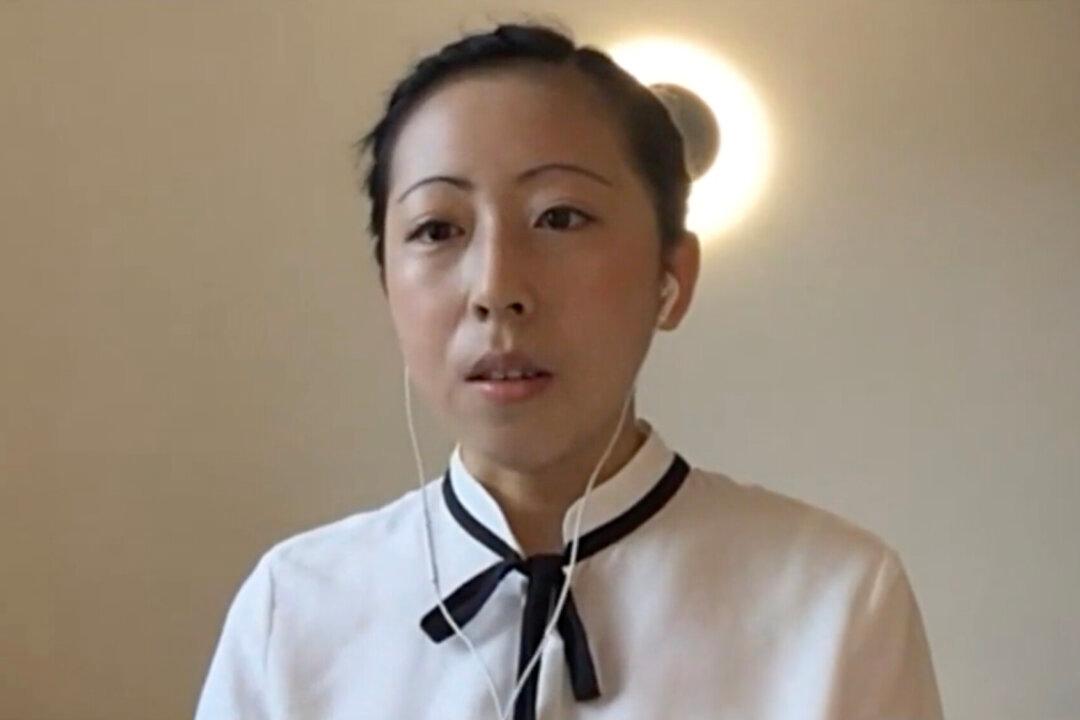LONDON, U.K.—From singer Amy Winehouse, to disgraced entertainer Rolf Harris, and infamous serial killers Rose and Fred West, Priscilla Coleman has been to their court cases and has memorised their facial expressions.
Artists have been banned from sketching in English courts since 1925, so as a courtroom artist, Texas-born Coleman takes notes to help her memorise the scene, then draws outside the courtroom – with sometimes only 15 minutes to complete the drawing from memory.
Her notes are a compilation of observations: cryptic memory prompters, statements said in court, pointy arrows, and descriptions like “laughs”, “grey”, and “pursed lips”.
“It’s like studying for a test, over and over and over. And after a while you don’t even have to think about it anymore. Then when I go away to draw, it’s in my head,” she said.
In her east London studio Coleman has a vast collection of the historical moments she has captured in court using a combination of oil pastel and water-based sticks.
At the News International phone-hacking trial, she particularly enjoyed drawing Rebekah Brooks. “She has a fantastic head of hair and I don’t always get to draw women, so that was really nice,” she said.







